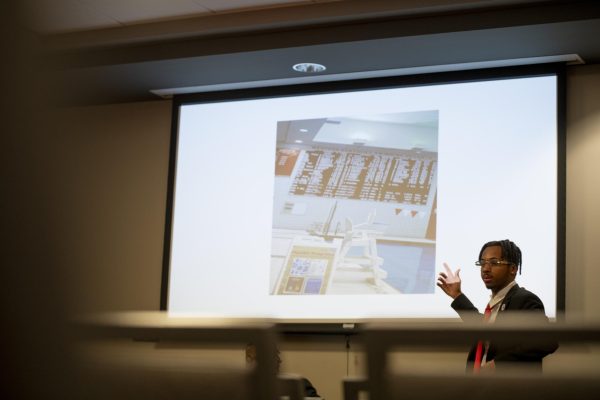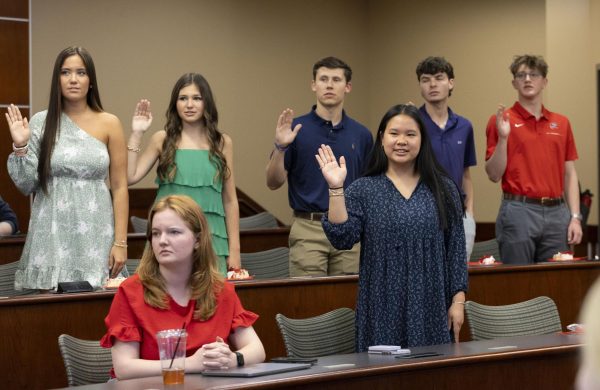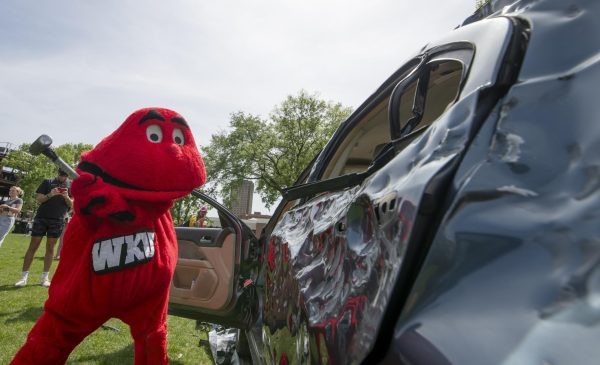Downtown may have funds for revitalization
April 10, 2003
Downtown Bowling Green may soon get a boost.
The city is awaiting its designation as a metropolitan statistical area, which would produce annual federal funding for its Downtown Redevelopment Project.
Designation by the Office of Management and Budget is expected in May or June, said Alice Burks, assistant director of the city/county planning commission.
The funds used for the Downtown Redevelopment Project will allow the city to make renovations and additions to the downtown area, she said.
Cheryl Blaine, executive director of the Downtown Redevelopment Authority, envisions downtown Bowling Green as a place where the young and old will want to work and live.
She said a variety of people will hopefully attract businesses wanting to meet their needs.
“Bowling Green’s downtown has remained vibrant when a lot of others are like ghost towns,” Blaine said.
Other cities like Owensboro, Glasgow and Covington are also redeveloping their downtowns, she said.
Blaine added that Bowling Green’s downtown is thriving but is not where it could be in the future.
The 20-year plan for downtown includes renovating or rebuilding existing buildings, reestablishing housing on vacant lots, building housing for the elderly, expanding medical facilities and developing some of the riverfront area, Burks said.
Buildings with historic value will not be torn down but will instead be renovated, she said.
Blaine said the city will offer incentives such as low interest loans and grants to residents wanting to repair their homes.
There are numerous ways to receive an MSA designation, Burks said. Bowling Green’s designation stems from having more than 50,000 in the urbanized area with a population of 58,314 people, she said.
Burks said Bowling Green was designated an urbanized area on May 1, 2002. This moved the city from a rural to urban status and qualified it for additional state funds, she said.
The urbanized area includes Bowling Green, Warren County and areas outside of the county meeting a 1,000 people per square mile density requirement, Burks said.
She said the MSA could include areas outside of Bowling Green and Warren County.
Commuting data will determine the size of the MSA, Burks said. In March, the planning commission received this data that shows the number of people who live in Warren County but commute to other counties for work and vice versa, she said.
“One thing of concern to Bowling Green and Warren County residents is, if they add another county to the MSA, then that’s a larger geographic area that you have to spread the money over,” Burks said. “You may have projects in Bowling Green that need immediate attention.”
The Downtown Revitalization Strategy study on an area of downtown known as “The District” began in January 2001 and was finalized in March 2002, Blaine said.
The area extends from the Barren River to Western and from the 31-W Bypass to the CSX railroad.
Public meetings were held to allow community leaders and various focus groups to voice their thoughts and concerns on the project.
Blaine said a group of Western students was particularly interested in having more businesses downtown geared toward them.
The city is currently looking at a smaller, 29 block region within “The District” known as the Chapter 99 urban renewal or development plan. Burks said the area was adopted January 7, 2003. She said Chapter 99 refers to a section of the Kentucky Revised Statutes.
The Warren County planning commission’s Web site states that “in a Chapter 99 plan, the city must outline a target area and identify the condition of its existing structures and facilities and then propose what changes should be made.”
The area was chosen because it had the most structural needs, Burks said. The smaller region extends from Eighth Avenue to the Barren River and Park Street to Kentucky Street.
The Chapter 99 area map is divided into sections. It shows the area to be renovated first, the area that could be used for elderly housing and the area planned for professional and office use.
“Every year, we will come back and look at it,” Burks said, referring to the map. “(We’ll) see what’s been accomplished, what still needs to be done and what other things have happened in the area that we need to take into consideration.”
Blaine said federal funding will only be part of the process. She has already began speaking to private investors who could assist in the project.
“It’s going to bring back the flavor to the community,” she said.
Reach Shawntaye Hopkins at [email protected].

























